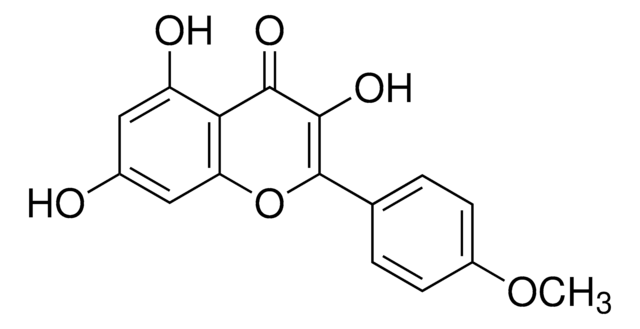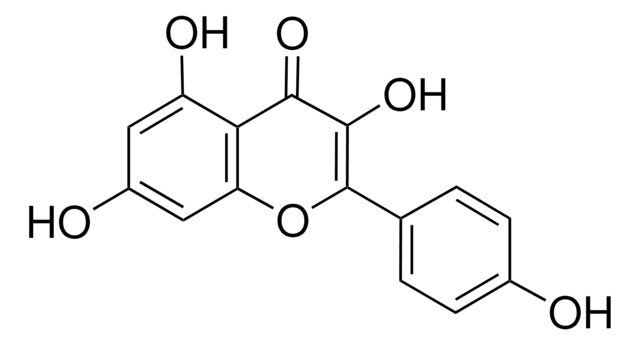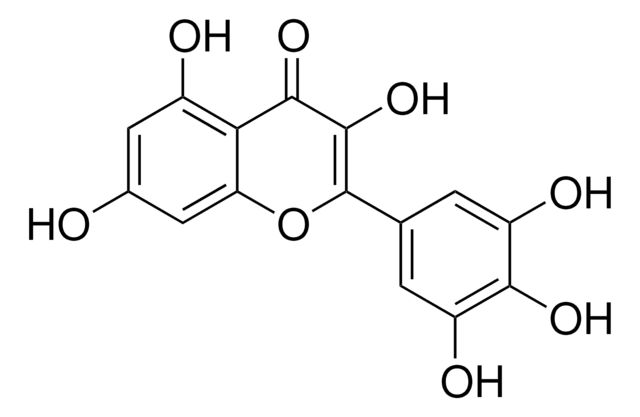17794
Isorhamnetin
≥95.0% (HPLC)
Synonym(s):
3′-Methoxy-3,4′,5,7-tetrahydroxyflavone, 3′-Methylquercetin, 3,4′,5,7-Tetrahydroxy 3′-methoxyflavone, Isorhamnetol, Quercetin 3′-methyl ether
About This Item
Assay
≥95.0% (HPLC)
application(s)
metabolomics
vitamins, nutraceuticals, and natural products
SMILES string
COc1cc(ccc1O)C2=C(O)C(=O)c3c(O)cc(O)cc3O2
InChI
1S/C16H12O7/c1-22-11-4-7(2-3-9(11)18)16-15(21)14(20)13-10(19)5-8(17)6-12(13)23-16/h2-6,17-19,21H,1H3
InChI key
IZQSVPBOUDKVDZ-UHFFFAOYSA-N
Looking for similar products? Visit Product Comparison Guide
Related Categories
General description
Application
- as a neuroprotective agent to test its effect on scopolamine-induced cortico-hippocampal learning and memory deficiency in mice
- as a reference standard in quadrupole time-of-flight mass spectrometry (QTOF MS) to analyze and quantify the phenolic compounds present in honey extract
- as a reference standard to determine the phenolic profile of Artemisia species using Reversed-phase high-performance liquid chromatography with diode array detection and electrospray ionization mass spectrometry (RP-HPLC-DAD-ESI-TQ-MS/MS)
Biochem/physiol Actions
Packaging
Storage Class Code
11 - Combustible Solids
WGK
WGK 3
Flash Point(F)
Not applicable
Flash Point(C)
Not applicable
Personal Protective Equipment
Regulatory Listings
Regulatory Listings are mainly provided for chemical products. Only limited information can be provided here for non-chemical products. No entry means none of the components are listed. It is the user’s obligation to ensure the safe and legal use of the product.
JAN Code
17794-VAR:
17794-BULK:
17794-5MG:
Certificates of Analysis (COA)
Search for Certificates of Analysis (COA) by entering the products Lot/Batch Number. Lot and Batch Numbers can be found on a product’s label following the words ‘Lot’ or ‘Batch’.
Already Own This Product?
Find documentation for the products that you have recently purchased in the Document Library.
Customers Also Viewed
Articles
Antioxidants protect biological systems from oxidative damage produced by oxygen-containing free radicals and from redoxactive transition metal ions such as iron, copper, and cadmium.
Our team of scientists has experience in all areas of research including Life Science, Material Science, Chemical Synthesis, Chromatography, Analytical and many others.
Contact Technical Service



